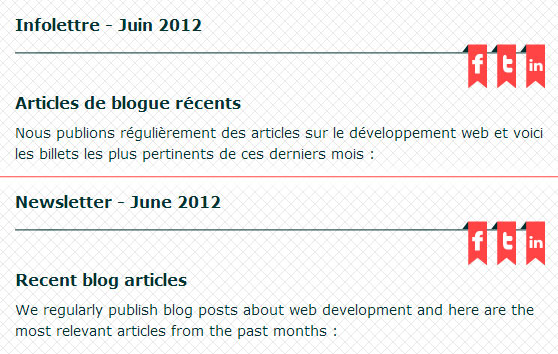At first glance, it seems like a quick and easy addition to a site. Still, when you take the time to think about it, you quickly realize that it's a more demanding procedure than expected.
Here are the three essential steps to take before starting the process to prevent unexpected problems and control the procedure.
1 - Write and translate texts
The first step is to make a site multilingual is to adapt the texts on each page. For example, if you want to add English to a French site, you must write the text, translate it into English, and revise it.
These three steps are undoubtedly the most significant investment of time and resources in the multilingualism process.
Not only do you have to translate the content of a site, but you also have to make sure that the translations make sense. That's why it's best to use a professional translation service and avoid using Google Translate, as this translation service is incomplete.
Interface elements to keep in mind:
- The site's slogan
- Main menu and footer navigation links
- The search field button
- The fields to be filled in the forms
2 - Adapt the images
In the second step, pay special attention to the images used throughout the site and check if they contain text. Finally, you need to create a new image with its translated text for each image where this is the case, as shown in the example below.
It is essential to check the image bearing the logo, especially if there is text in it. This is why it is strongly recommended not to include text in an image. This good practice has several advantages, including the ease of implementation of multilingualism of a site.
Adapting images can take a considerable amount of time, so it is preferable to ask a graphic designer to do it in parallel to respect the planned deadlines.
3 - Adjust your web presence
The last step is to improve the overall user experience. Finally, you need to consider your web presence and adapt it for multilingualism.
For example, suppose you have a Facebook page in French, and you want to add English to this page. In that case, you should consider creating a second Facebook page, this time entirely in the English language.
The same applies if you send out newsletters. If your resources allow it, translating your newsletters to reach your target audience and using different subscription lists for each language would be ideal.
The key to success
Implementing multilingualism in a website requires some effort from all parties involved. The best way to avoid hitches is to plan ahead and not underestimate translation time.
The key is to organize and coordinate the translation steps to minimize management time. An optimal process will ensure the complete and timely delivery of a multilingual website.
*Photo credit for bad translation: Stefan Sogne (via TDM)





